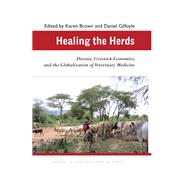
Note: Supplemental materials are not guaranteed with Rental or Used book purchases.
Purchase Benefits
What is included with this book?
| Preface | p. vii |
| Acknowledgments | p. ix |
| Introduction | p. 1 |
| Epizootic Diseases in the Netherlands, 1713-2002: Veterinary Science, Agricultural Policy, and Public Response | p. 19 |
| The Now-Opprobrious Title of "Horse Doctor": Veterinarians and Professional Identity in Late Nineteenth-Century America | p. 42 |
| Breeding Cows, Maximizing Milk: British Veterinarians and the Livestock Economy, 1930-50 | p. 59 |
| Polking Epizootics: Legislation and Administration during Outbreaks of Cattle Plague in Eighteenth-Century Northern Germany as Continuous Crisis Management | p. 76 |
| For Better or Worse?: The Impact of the Veterinarian Service on the Development of the Agricultural Society in Java (Indonesia) in the Nineteenth Century | p. 92 |
| Fighting Rinderpest in the Philippines, 1886-1941 | p. 108 |
| Diseases of Equids in Southeast Asia, c. 1800-c. 1945: Apocalypse or Progress? | p. 129 |
| "They Give Me Fever": East Coast Fever and Other Environmental Impacts of the Maasai Moves | p. 146 |
| Animal Disease and Veterinary Administration in Trinidad and Tobago, 1879-1962 | p. 163 |
| Nineteenth-Century Australian Pastoralists and the Origins of State Veterinary Services | p. 180 |
| Holding Water in Bamboo Buckets: Agricultural Science, Livestock Breeding, and Veterinary Medicine in Colonial Manchuria | p. 195 |
| Sheep Breeding in Colonial Canterbury (New Zealand) A Practical Response to the Challenges of Disease and Economic Change, 1850-1914 | p. 215 |
| Animal Science and the Representation of Local Breeds: Looking into the Sources of Current Characterization of Bororo Zebu | p. 232 |
| Kenya's Cattle Trade and the Economics of Empire, 1918-48 | p. 250 |
| Conclusion | p. 269 |
| Appendix | p. 275 |
| Select Bibliography | p. 281 |
| Contributors | p. 287 |
| Index | p. 293 |
| Table of Contents provided by Ingram. All Rights Reserved. |
The New copy of this book will include any supplemental materials advertised. Please check the title of the book to determine if it should include any access cards, study guides, lab manuals, CDs, etc.
The Used, Rental and eBook copies of this book are not guaranteed to include any supplemental materials. Typically, only the book itself is included. This is true even if the title states it includes any access cards, study guides, lab manuals, CDs, etc.